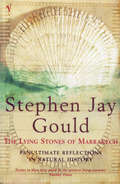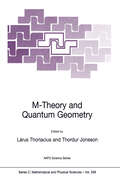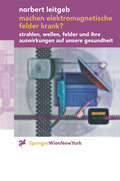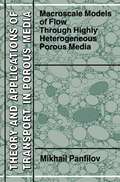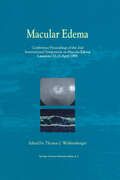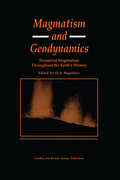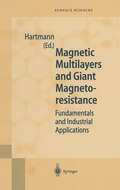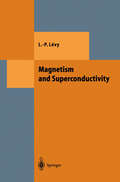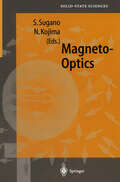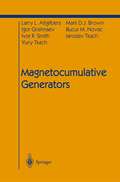- Table View
- List View
Longevity and Quality of Life: Opportunities and Challenges
by Robert N. Butler Claude JasminNations around the world are experiencing a spectacular increase in longevity. Society as a whole is being challenged by issues arising from this revolution in longevity. Although the specter of the loneliness and existential suffering of older citizens is such that some people under the age of 65 find it difficult to conceive of a long-term future, persons over 85 have proven that aging does not necessarily preclude a healthy and productive life. Extraordinary progress in both curative and preventive medicine justifies optimism about the quality of life and state of well-being that can be enjoyed even in great old age. We should look to professionals in diverse fields to develop creative solutions to the inevitable issues that will arise with aging. Governments must prepare for the future health of their citizens by making long-term investments to educate all sectors of society in the value of good nutrition, exercise, and lifestyles that enhance well-being throughout life. Also, governments should realize that the main cause of health care expenditure is serious illness which occurs in persons of all ages, and not predominantly in older people. Early detection can help save lives, as well. Health and longevity of life will ultimately end as a political issue. What is needed is long-term government investments necessary for a viable health policy. The question arises: will world leaders be able to commit to such a policy? Two major socioeconomic phenomena may have a regulating effect on this issue. The first is the emergence of pressure groups that have come into being in response to a particular health issue, such as AIDS. The second is the emergence of ethics committees in developed nations that deal solely with health issues.
Low-Dimensional Systems: Interactions and Transport Properties (Lecture Notes in Physics #544)
by Tobias BrandesExperimental progress over the past few years has made it possible to test a n- ber of fundamental physical concepts related to the motion of electrons in low dimensions. The production and experimental control of novel structures with typical sizes in the sub-micrometer regime has now become possible. In parti- lar, semiconductors are widely used in order to con?ne the motion of electrons in two-dimensional heterostructures. The quantum Hall e?ect was one of the ?rst highlights of the new physics that is revealed by this con?nement. In a further step of the technological development in semiconductor-heterostructures, other arti?cial devices such as quasi one-dimensional ‘quantum wires’ and ‘quantum dots’ (arti?cial atoms) have also been produced. These structures again di?er very markedly from three- and two-dimensional systems, especially in relation to the transport of electrons and the interaction with light. Although the technol- ical advances and the experimental skills connected with these new structures are progressing extremely fast, our theoretical understanding of the physical e?ects (such as the quantum Hall e?ect) is still at a very rudimentary level. In low-dimensional structures, the interaction of electrons with one another and with other degrees of freedoms such as lattice vibrations or light gives rise to new phenomena that are very di?erent from those familiar in the bulk ma- rial. The theoretical formulation of the electronic transport properties of small devices may be considered well-established, provided interaction processes are neglected.
Lung Surfactants: Basic Science and Clinical Applications
by Robert H. NotterIntegrating basic and clinical research on the biophysical and physiological functions of pulmonary surfactants, this practical reference presents thorough, cutting-edge coverage on surfactant-related lung disease. Manage neonatal respiratory distress syndrome (RDS), acute respiratory distress syndrome (ARDS), and acute lung injury more effecti
Lyapunov-Based Control of Mechanical Systems (Control Engineering)
by Marcio S. Queiroz Darren M. Dawson Siddharth P. Nagarkatti Fumin ZhangThe design of nonlinear controllers for mechanical systems has been an ex tremely active area of research in the last two decades. From a theoretical point of view, this attention can be attributed to their interesting dynamic behavior, which makes them suitable benchmarks for nonlinear control the oreticians. On the other hand, recent technological advances have produced many real-world engineering applications that require the automatic con trol of mechanical systems. the mechanism for de Often, Lyapunov-based techniques are utilized as veloping different nonlinear control structures for mechanical systems. The allure of the Lyapunov-based framework for mechanical system control de sign can most likely be assigned to the fact that Lyapunov function candi dates can often be crafted from physical insight into the mechanics of the system. That is, despite the nonlinearities, couplings, and/or the flexible effects associated with the system, Lyapunov-based techniques can often be used to analyze the stability of the closed-loop system by using an energy like function as the Lyapunov function candidate. In practice, the design procedure often tends to be an iterative process that results in the death of many trees. That is, the controller and energy-like function are often constructed in concert to foster an advantageous stability property and/or robustness property. Fortunately, over the last 15 years, many system the ory and control researchers have labored in this area to produce various design tools that can be applied in a variety of situations.
The Lying Stones Of Marrakech: Penultimate Reflections in Natural History (Drakontos Ser.)
by Stephen Jay GouldStephen Jay Gould's writing remains the modern standard by which popular science writing is judged. Ever since the late 1970s up until till his death in 2002, his monthly essay in Natural History and his full-length books bridged the yawning gap between science and wider culture.In this fascinating new collection of essays from Natural History, Gould applied biographical perspectives to the illumination of key scientific concepts and their history, ranging from the origins of palaeontology to modern eugenics and genetic engineering. The essays brilliantly illuminate and elucidate the puzzles and paradoxes great and small that have fuelled the enterprise of science and opened our eyes to a world of unexpected wonders.
Lymphoid Organogenesis: Proceedings of the Workshop held at the Basel Institute for Immunology 5th–6th November 1999 (Current Topics in Microbiology and Immunology #251)
by Fritz MelchersIt has been clear for a long time that after transplantation of a lymphoid organ, hematopoietic stem cells can regenerate the compartments of the organ, provided that the rest of its architecture - the strome, the epithelia and the vessels - is intact. Ahead lies the even greater challenge to assemble also these other architectural elements of a lymphoid organ by transplanting stem cells. The workshop on lymphoid organogenesis was convened to review current knowledge of and experimental skills involved in this grand project to build a lymphoid organ from its individual cellular components.
M-Theory and Quantum Geometry (Nato Science Series C: #556)
by Lárus Thorlacius Thordur JonssonThe fundamental structure of matter and spacetime at the shortest length scales remains an exciting frontier of basic research in theoretical physics. A unifying theme in this area is the quantization of geometrical objects. The majority of lectures at the Advanced Study Institute on Quantum Ge ometry in Akureyri was on recent advances in superstring theory, which is the leading candidate for a unified description of all known elementary par ticles and interactions. The geometric concept of one-dimensional extended objects, or strings, has always been at the core of superstring theory but in recent years the focus has shifted to include also higher-dimensional ob jects, so called D-branes, which play a key role in the non-perturbative dynamics of the theory. A related development has seen the strong coupling regime of a given string theory identified with the weak coupling regime of what was previ ously believed to be a different theory, and a web of such" dualities" that interrelates all known superstring theories has emerged. The resulting uni fied theoretical framework, termed M-theory, has evolved at a rapid pace in recent years.
Machen elektromagnetische Felder krank?: Strahlen, Wellen, Felder und ihre Auswirkungen auf unsere Gesundheit
by Norbert LeitgebMacroscale Models of Flow Through Highly Heterogeneous Porous Media (Theory and Applications of Transport in Porous Media #16)
by M. PanfilovThe The book book was was planned planned in in such such a a manner manner that that two two basic basic goals goals would would be be reached. reached. On On the the one one hand, hand, the the goal goal was was to to show show some some new new results results in in the the field field of of modeling modeling transport transport through through highly highly heterogeneous heterogeneous media, media, based based on on the the homogenization homogenization theory. theory. Multiple Multiple new new mathematical mathematical models models of of transport transport are are presented presented herein, herein, studying studying their their properties, properties, developing developing methods methods to to compute compute effective effective parameters parameters of of the the averaged averaged media, media, simulation simulation of of cell cell problems, problems, using using new new models models to to simulate simulate some some practical practical problems. problems. High High heterogeneity heterogeneity being being subjected subjected to to the the homogenization homogenization procedure, procedure, generates generates non-local non-local phenomena phenomena and and then then gives gives a a possibility possibility to to develop develop a a new, new, non-local non-local (or (or "dynamic"), "dynamic"), theory theory of of transport transport in in porous porous media. media.
Macular Edema: Conference Proceedings of the 2nd International Symposium on Macular Edema, Lausanne, 23–25 April 1998
by Thomas J. WolfensbergerThis timely publication fills a large gap in the ophthalmic literature which has so far lacked a monograph on the clinically very important subject of macular edema. The book presents the most up-to-date scientific concepts concerning the etiology and pathogenesis of blood retinal barrier breakdown such as tight junction associated protein dysfunction, and changes in fluid transport properties of the retinal pigment epithelium. The bulk of the book is clinically oriented and addresses novel imaging and diagnostic techniques for the detection of macular edema as well as the clinical context of a panoply of ocular diseases which induce macular edema, such as diabetes, other vasculopathies, uveitis, and many others. New light is shed on the association between highly active antiretroviral therapy and the induction of macular edema in HIV-positive patients. Novel drug treatment regimens with steroids and carbonic anhydrase inhibitors as well as new ways of applying laser and surgical therapies are also discussed in detail, and practical treatment guidelines are given. This book will be helpful for vitreoretinal specialists as well as for the practising ophthalmologist confronted with patients suffering from macular edema.
Made to Measure: New Materials for the 21st Century
by Philip BallMade to Measure introduces a general audience to one of today's most exciting areas of scientific research: materials science. Philip Ball describes how scientists are currently inventing thousands of new materials, ranging from synthetic skin, blood, and bone to substances that repair themselves and adapt to their environment, that swell and flex like muscles, that repel any ink or paint, and that capture and store the energy of the Sun. He shows how all this is being accomplished precisely because, for the first time in history, materials are being "made to measure": designed for particular applications, rather than discovered in nature or by haphazard experimentation. Now scientists literally put new materials together on the drawing board in the same way that a blueprint is specified for a house or an electronic circuit. But the designers are working not with skylights and alcoves, not with transistors and capacitors, but with molecules and atoms. This book is written in the same engaging manner as Ball's popular book on chemistry, Designing the Molecular World, and it links insights from chemistry, biology, and physics with those from engineering as it outlines the various areas in which new materials will transform our lives in the twenty-first century. The chapters provide vignettes from a broad range of selected areas of materials science and can be read as separate essays. The subjects include photonic materials, materials for information storage, smart materials, biomaterials, biomedical materials, materials for clean energy, porous materials, diamond and hard materials, new polymers, and surfaces and interfaces.
Magmatism and Geodynamics: Terrestrail Magmatism Throughout the Earth's History
by O. A. BagatikovMagnatism is the only true endogenic process for generating new material on the Earth's surface. Obviously, magmatism and tectonic movements are reflections of geodynamics, that is, physical processes which occur in deep-seated environments. What are the interrelationships between magmatism and tectronics? How did the character of terrestrial magmatism change through time and are there any irregularities in this process?
Magmatism and Geodynamics: Terrestrail Magmatism Throughout the Earth's History
by O. A. BogatikovMagnatism is the only true endogenic process for generating new material on the Earth's surface. Obviously, magmatism and tectonic movements are reflections of geodynamics, that is, physical processes which occur in deep-seated environments. What are the interrelationships between magmatism and tectronics? How did the character of terrestrial magmatism change through time and are there any irregularities in this process?
Magnetic Multilayers and Giant Magnetoresistance: Fundamentals and Industrial Applications (Springer Series in Surface Sciences #37)
by H.A.M. van Berg R. Coehoorn M.A.M. Gijs P. Grünberg T. Rasing K. RöllThis unified overview of recent progress in a growing, multi-disciplinary field places special emphasis on the industrial applications of magnetic multilayered materials. The text describes a wide range of physical aspects, together with experimental and theoretical methods.
Magnetism and Superconductivity (Theoretical and Mathematical Physics)
by Laurent-Patrick LevyThis book was written from lectures given to MSc students following the 'Matter and Radiation' course at the University of Grenoble I. Although magnetism and superconductivity cover a wide area of physics, the course was motivated by a common factor: these phenomena are realisa tions of thermodynamic states which break certain continuous symmetries. In the case of magnetism, they break rotational invariance. In the case of superconductivity, they break gauge invariance. The aim of the course was to bring out the importance of broken symmetries in condensed matter physics. The book can be understood with minimal prerequisites and the math ematical techniques used are fairly elementary. However, a basic knowledge of spin and angular momentum is essential, since quantum mechanics lies at the heart of both magnetism and superconductivity. Chapter 2 reviews the main points. The first chapter explains how thermodynamic functions are constructed in the presence of a magnetic field. As the book has two parts, Magnetism (I) and Superconductivity (II), these will be specified between brackets in cross-references to sections and chapters. I have made a particular effort to present phenomena in magnetism and superconductivity by starting with concrete examples. Some technological applications of superconductivity have also been described.
Magneto-Optics (Springer Series in Solid-State Sciences #128)
by Satoru Sugano Norimichi KojimaEdited by two pioneers of magneto-optics, this book is designed to provide graduate students and researchers with an introductory state-of-the-art review of recent developments in this subject. The field encompasses important areas in solid-state physics, chemical physics and electrical engineering. The book deals with optical spectroscopy of paramagnetic, antiferromagnetic, and ferromagnetic materials, photo-induced magnetism and their applications to opto-electronics.
Magnetoacoustic Polarization Phenomena in Solids
by V.V. Gudkov David GavendaThis book had its conception when Dr. Gudkov visited me in Austin in the Fall of 1995 and urged me to join him in writing a review of the field of magnetoacoustic polarization phenomena. I protested that, although my students and I had done some early work on this topic, most of the later work was done by researchers at the Institute for Metal Physics and by other investigators in the former Soviet Union. He eventually persuaded me that my initial contribution and general experience with magnetoacoustic phenomena qualified me to serve as a co-author. When I considered the fact that the extensive exploration of magnetoacoustic phenomena in the former Soviet Union was relatively unknown to Western scientists, I agreed to work with him on this project. In order to make the material more accessible to nonspecialists, we have adopted consistent notation throughout the text and redrawn the figures from published papers in a consistent fashion. Because our two institutions lie on opposite sides of the world, we needed some financial support to bring the book to fruition. We are very grateful to the Science Program for International Collaboration of the North Atlantic Treaty Organization for financial support through Grant No. HTECH. CRG 951549. I have dedicated this book to my wife, Janie, in recognition of the support she has given me throughout my professional career. J. D.
Magnetocumulative Generators (Shock Wave and High Pressure Phenomena)
by Larry L. Altgilbers Mark D.J. Brown Igor Grishnaev Bucur M. Novac Ivor R. Smith Yuriy Tkach Iaroslav TkachA discussion of explosive pulsed power systems and their applications, this book consists of 7 chapters. The first five describe the basic physics of these sources and their ancillary equipment, based on a manual for training engineers in Russia. Chapter 6 is a description of codes and methodologies used at Loughborough University in the UK to build flux compressors, while Chapter 7 covers two specific applications: high power lasers and high power microwave sources. The book introduces all types of explosive power sources and their ancillary equipment, the procedures required to build them, and specific applications.
Magnetresonanztomographie in der Pädiatrie
by M. ReitherEndlich ein Buch, das sich ausschließlich mit der Anwendung der MRT bei Kindern befasst! Von der modernen Gerätetechnik über die Einsatzmöglichkeiten bis zur Indikation bei den wichtigsten Krankheitsbildern unterstützt Sie das Buch mit praktischen Entscheidungshilfen für die sichere und effiziente Anwendung dieser Untersuchungsmethode.
Maimonides and the Sciences (Boston Studies in the Philosophy and History of Science #211)
by Robert S. Cohen Hillel LevineIn this book, 11 leading scholars contribute to the understanding of the scientific and philosophical works of Moses Maimonides (1135-1204), the most luminous Jewish intellectual since Talmudic times. Deeply learned in mathematics, astronomy, astrology (which he strongly rejected), logic, philosophy, psychology, linguistics, and jurisprudence, and himself a practising physician, Maimonides flourished within the high Arabic culture of the 12th century, where he had momentous influence upon subsequent Jewish beliefs and behavior, upon ethical demands, and upon ritual traditions. For him, mastery of the sciences was indispensable in the process of religious fulfilment.
Major Histocompatibility Complex: Evolution, Structure, and Function
by M. KasaharaEvery biological system is the outcome of evolution and has a history all its own. This history dictates how the system works and why it has certain properties and not others. This is why we need to study not only the structure and function, but also the history of the system. This argument undoubtedly applies to the study of the immune system and also to the study of the major histocompatibility complex (MHC). Since 1989, researchers of various scientific disciplines who share a deep inter est in MHC evolution have held a meeting every two years to discuss their latest research developments, exchange ideas, and foster friendship. Together with my colleagues Drs. Naoyuki Takahata and Yoko Satta, I organized the Sixth Interna tional Workshop on MHC Evolution in Hayama, Japan, May 25-29, 1999. This volume is the proceedings of that conference. It covers diverse topics pertinent to MHC evolution, including the origin of the adaptive immune system, the organi zation of the MHC in humans and other model vertebrates, MHC-parasite co evolution, and the nature and origin of MHC polymorphism. I hope that this book will be of interest not only for MHC researchers and immunologists, but also for other specialists who are interested in the evolution of biological systems in gen eral.
Managing Global Innovation: Uncovering the Secrets of Future Competitiveness
by Roman Boutellier Oliver Gassmann Maximilian von ZedtwitzBased on empirical research of over 240 interviews the authors present new concepts and trends in global R&D management. Case studies from 18 best-practice companies give detailed answers to the most pressing challenges for mastering international innovation."...a real tour de force, probably destined to become a standard in this field for some time to come." Professor Jeff Huang, Harvard University "A feast of delights... deserves a very wide readership." Phil Gamlen, ICI Technology - Science and Technology Policy Strategy
Manual of Bone Densitometry Measurements: An Aid to the Interpretation of Bone Densitometry Measurements in a Clinical Setting
by John N. FordhamThe importance of osteoporosis in the United Kingdom as a cause of death and disability is now well recognised. There are in excess of 200,000 osteoporotic-related fractures in the UK per annum asso ciated with an estimated cost of £942,000,000. Following hip fracture it is known that about 50% of patients are unable to live indepen dently and about 20% of such patients die within the first 6 months. These figures, compelling as they are, reflect poorly on current medical practices which manifestly have failed to identify patients with low bone density at risk of fracture. The hope is that the techni cal advances which have enabled bone mineral density, and other allied indices, to be measured with high precision and accuracy offers the chance of identifying patients at risk of fracture and guiding the clinician to make treatment decisions which may reduce the patients' risk of fracture. In the UK, services for identifying patients at risk of fracture are still in their infancy and are not uniformly available throughout the country. This situation is, however, likely to improve particularly fol lowing the publication of the Royal College of Physicians report "Osteoporosis -clinical guidelines for prevention and treatment" and the recognition in "Our Healthier Nation" that osteoporosis pre vention should be included as a target to achieve a reduction of 20% in accidents by 2010.
Many-Electron Densities and Reduced Density Matrices (Mathematical and Computational Chemistry)
by Jerzy CioslowskiScience advances by leaps and bounds rather than linearly in time. I t is not uncommon for a new concept or approach to generate a lot of initial interest, only to enter a quiet period of years or decades and then suddenly reemerge as the focus of new exciting investigations. This is certainly the case of the reduced density matrices (a k a N-matrices or RDMs), whose promise of a great simplification of quantum-chemical approaches faded away when the prospects of formulating the auxil iary yet essential N-representability conditions turned quite bleak. How ever, even during the period that followed this initial disappointment, the 2-matrices and their one-particle counterparts have been ubiquitous in the formalisms of modern electronic structure theory, entering the correlated-level expressions for the first-order response properties, giv ing rise to natural spinorbitals employed in the configuration interaction method and in rigorous analysis of electronic wavefunctions, and al lowing direct calculations of ionization potentials through the extended Koopmans'theorem. The recent research of Nakatsuji, Valdemoro, and Mazziotti her alds a renaissance of the concept of RDlvls that promotes them from the role of interpretive tools and auxiliary quantities to that of central variables of new electron correlation formalisms. Thanks to the economy of information offered by RDMs, these formalisms surpass the conven tional approaches in conciseness and elegance of formulation. As such, they hold the promise of opening an entirely new chapter of quantum chemistry.
Many-Particle Physics (Physics of Solids and Liquids)
by Gerald D. MahanThe first, second, and third editions of this book seem to occur at ten year intervals. The intent is to keep the book up-to-date. Many-body theory is a field which continually evolves in time. Journals only publish new results, conferences only invite speakers to report new phenomena, and agencies only fund scientists to do new physics. Today's physics is old hat by tomorrow. Students want to learn new material, and textbooks must be modified to keep up with the times. The early chapters in this book teach the techniques of many-body theory. They are largely unchanged in format. The later chapters apply the techniques to specific problems. The third edition increases the number of applications. New sections have been added, while old sections have been modified to include recent applications. The previous editions were set in type using pre-computer technology. No computer file existed of the prior editions. The publisher scanned the second edition and gave me a disk with the contents. This scan recorded the words accurately and scrambled the equations into unintelligible form. So I retyped the equations using LaTeX. Although tedious, it allowed me to correct the infinite numbers of typographical errors in the previous edition. The earlier typesetting methods did not permit such corrections. The entire book was edited sentence-by sentence. Most old sections of the book were shortened by editing sentences and paragraphs.




